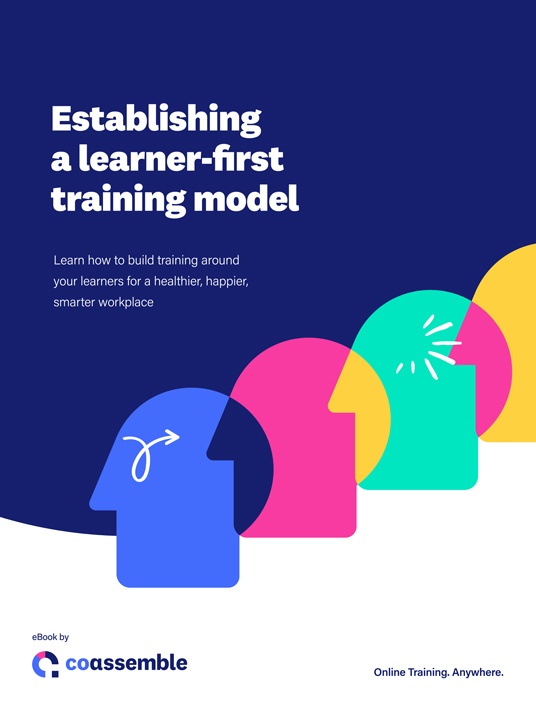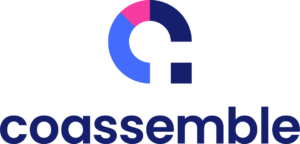What Is The Learner-First Training Model? How Can It Be Established?
Whilst this may seem like common sense, it's actually not what a lot of trainers do. The learner-first training model is simple but radically different from the way a lot of organizations train.

A quick note! When we talk about trainers, we mean anyone looking to share knowledge in their organisation—whether they're HR managers, training coordinators, sales directors, business owners, or more.
Training Misconceptions: How Organisations Usually Approach Training
Time-poor trainers often focus on choosing their training platform, their content medium, and their delivery mechanism for staff training.
Questions such as these arise:
- What LMS should I use to train my staff?
Before questions like these:
- Who am I training?
This is a tool-first training approach. Instead of looking at the learner first, the trainer starts by evaluating the tools they have on hand and tries to fit their learners into predefined platforms and processes.
On a broader level, the tool-first approach is a case of putting tactics before strategy. By thinking about how to execute training before thinking about learners themselves, the learners are forgotten until the training itself is rolled out.
This is why in the tool-first model, trainers often find themselves trying to fit square pegs (their learners) into round holes (their tools).
What Are The Benefits Of The Learner-First Model?
In the learner-first training model, strategy comes first and tactics come second. Trainers are able to see what shape their pegs are, and fashion appropriately sized holes.
In short, by putting the learner first, trainers ensure that the most important part of the learning strategy, the learner, has success. And when learners have success, the learning strategy itself succeeds.
When learner pathways are structured, tools are chosen, and learning is designed with the learner in mind, trainers will see more engaged learners, better training outcomes, and happier, healthier, smarter workplaces.
So how do you go about establishing a learner-first training model?
The Stages Of The Learner-First Training Model
Evaluate
The goals of the evaluation stage are to understand your learners and define your learning goals before you start building out your training.
The best tool for understanding your learners are learner personas.
A learner persona is a representation of a learner group, distilled down into a profile that you can easily refer back to when creating your training strategy. Whilst the learner persona is fictionalised and represents a group of learners, it is a good way to begin thinking of your learners as people and designing your training accordingly. In order to do this effectively, the article Establishing A Learner-First Training Model: How To Create Learner Personas can be really helpful as it offers interesting insights into the topic.
Establishing clear learner personas should help you answer the following questions:
- Who are my learners?
- Why are they learning?
Once you understand your learners, you’ll be in a position to define your learning goals [1].
Defining your learning goals will give you answers to the following questions:
- What do my learners need to learn?
- What do my learners already know?
- What knowledge do I need to share?
Combined, these two sets of questions will create a solid foundation from which to begin building your training strategy.
Build
The build phase is about using your newfound understanding of your learners and top-line strategic goals to build your training structure.
The first step in the build phase is structuring your learner pathways.
A learner pathway is an entire journey that your learner takes from the moment they realise they need to complete training, to the moment they finish learning and begin applying their knowledge. This includes post-training assessment and retention exercises.
Your learner pathways will answer the question:
- How are my learners going to learn?
Next, it’s time to choose your training tools. This will involve evaluating your current tools in light of your learner personas, learning goals and learner pathways, identifying gaps in your tools requirements and filling those gaps. If you need help, 'How To Choose The Right Tools For Your Learners' [2] is an article of great help to you.
Once you’ve mapped out your learners’ journey to knowledge and chosen your tools, it’s time to get designing.
Design
The design stage involves planning and designing your actual training content.
The planning stage helps you answer questions about how much content you’ll need to design and how you’ll resource it before you get into the actual design phase.
Test
So you have a clear picture of your learners, your training structure, and you’ve finished building out your actual training content.
The next stage involves testing your training to ensure that it successfully satisfies your learning goals before rolling it out to your wider learner base. The testing phase will allow you to:
- Decide on your hypothesis and define a measurable metric for success.
- Gather a representative cohort (based on your learner personas).
- Conduct pre-testing to benchmark your test.
- Conduct testing and prove or disprove the hypothesis.
- Ensure data is clean and accurate, ready for wider dissemination of training.
Disseminate
The dissemination stage is all about rolling out your training to your learners and scaling that training over time. When delivering your training, you’ll need to look at your rollout model, tech requirements, timelines, and training structure. Once you’ve successfully delivered your training, it’s time to think about scaling it through automation and integration.
Evaluate
Finally, we’re back at the evaluation stage again. The final evaluation stage involves measuring the success of your training [3], including how to measure that your training is actually being applied in the real world (beyond just LMS completion rates), and how to set up impactful reporting [4] that feeds back into improving your training strategy.
The Bottom Line
The learner-first training model involves some serious groundwork, but in the long run, it pays off, as learners receive training that’s been tailored not just by way of content, but by also by delivery method and training model.
By focusing on strategy over tactics, trainers have a comprehensive understanding of their end goals, and can easily explain the importance of training to their business. Most importantly, the learner-first model ensures that training continues to improve over time, and never loses sight of the most important aspect of any training process: the learners themselves.
Wondering how to implement your own learner-first training model? Download the eBook Establishing A Learner-First Training Model and discover the step by step process on how to perfectly execute the goal of making the learner have success. Also, discover how to incorporate career mapping into your digital training strategy using a learner-first approach through the available Webinar 6 Steps To Incorporate Career Mapping Into Your Digital Training Strategy.
Read more:
- How To Identify Clear Learning Goals
- How To Choose The Right Tools For Your Learners
- 4 Questions To Ask When Evaluating Training
- 6 Requirements For Setting Up Actionable Reporting







